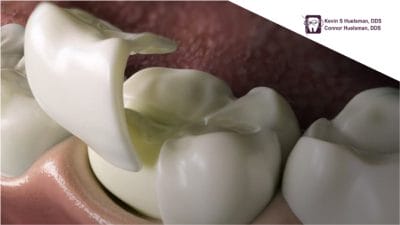1. SureSmile and Invisalign
Clear aligners like SureSmile and Invisalign have revolutionized orthodontics. These aligners are crafted from clear, flexible plastic that fits snugly over your teeth. They are an excellent alternative to traditional metal braces, offering several benefits.
One of the main advantages of clear aligners is their near-invisibility. This allows for a more discreet treatment process, which is particularly appealing for adults and teens who may feel self-conscious about braces. Additionally, without metal brackets or wires, clear aligners provide a more comfortable fit, reducing irritation to the gums and mouth.
Clear aligners are also removable, making it easier to maintain good oral hygiene. You can eat, brush, and floss without the restrictions that come with traditional braces. Plus, advanced imaging technology allows you to preview potential treatment outcomes, giving you a clear picture of what to expect.
2. Porcelain Veneers
Porcelain veneers in Worthington, Ohio, are a versatile solution for various aesthetic concerns, including discoloration, chips, gaps, and misalignment. Made from high-quality ceramic materials, veneers closely mimic natural tooth enamel.
The process of getting veneers involves minimal tooth preparation, followed by the application of thin ceramic layers bonded to the front of your teeth. This creates a natural and aesthetically pleasing appearance. Veneers are particularly effective for addressing multiple cosmetic issues simultaneously, making them a popular choice among patients seeking comprehensive smile makeovers.
One of the key benefits of porcelain veneers is their durability. With proper care, veneers can last many years, providing a long-term solution for a beautiful smile.

3. Teeth Whitening
Teeth whitening in Worthington, Ohio, remains one of the most sought-after cosmetic dental procedures. In-office whitening treatments are particularly effective, offering immediate and noticeable results. Unlike over-the-counter whitening kits, professional treatments use higher concentrations of bleaching agents under controlled conditions, ensuring both safety and efficacy.
Professional teeth whitening can significantly lighten your teeth in just one session. This makes it an excellent option for special occasions or when you want quick results. Additionally, being under the care of a dental professional means the procedure is monitored closely to minimize any potential side effects, such as tooth sensitivity or gum irritation.
Proper dental hygiene and periodic touch-ups can help maintain the results of your whitening treatment, keeping your smile bright for years to come.

4. Dental Bonding
Dental bonding is a cost-effective and efficient solution for repairing minor imperfections such as chips, cracks, and gaps in teeth. The procedure involves applying a tooth-colored composite resin to the affected area, which is then shaped, hardened, and polished to blend seamlessly with the surrounding teeth.
One of the main advantages of dental bonding is its affordability. It offers a quick solution for minor aesthetic concerns and can often be completed in a single visit. However, for more significant or durable corrections, alternatives like veneers or crowns might be recommended.
Bonding is an excellent choice for those looking to improve their smile with minimal investment of time and resources. It’s a straightforward procedure that yields immediate results.

5. Inlays and Onlays
Inlays and onlays offer a durable and aesthetically pleasing solution for teeth that have suffered from decay or damage that is too extensive for a traditional filling but not severe enough to require a full crown.
As restorative solutions, inlays and onlays are fabricated in a dental lab and then bonded to the damaged tooth, providing a precise fit and a natural appearance. Inlays and onlays are typically made from porcelain or composite resin, materials known for their strength and durability. They are an excellent choice for restoring teeth while preserving as much of the natural tooth structure as possible.
The precision fit of inlays and onlays helps ensure a long-lasting restoration that can withstand the forces of chewing and biting. This makes them a reliable option for maintaining the integrity of your teeth.

6. Dental Bridges
Dental bridges are an effective way to replace missing teeth, restoring both function and aesthetics. There are several types of dental bridges, each designed to address different dental needs.
- Fixed Bridges: These consist of one or more artificial teeth (pontics) anchored by dental crowns on either side. Fixed bridges are a common solution for replacing one or more missing teeth.
- Removable Bridges: Also known as partial dentures, these can be removed for cleaning. They offer flexibility and ease of maintenance.
- Cantilever Bridges: Used when adjacent teeth are on only one side of the missing tooth, cantilever bridges provide a solution in specific situations where other types of bridges might not be suitable.
- Implant-Supported Bridges: These are supported by dental implants rather than crowns or frameworks. Implant-supported bridges offer high stability and longevity.

